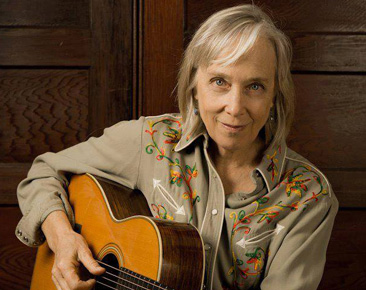
This month’s edition of Artist2Artist finds Lisa Jacobi looking at the wider landscape of bluegrass music. Lisa was inspired by her discussion with musical artist Laurie Lewis. Their complete interview can be heard in the podcast below.
 What do you think is the state of bluegrass music? Is it growing? Is it evolving or *devolving* into a different place and sound?
What do you think is the state of bluegrass music? Is it growing? Is it evolving or *devolving* into a different place and sound?
I was asked this recently when being interviewed for an Atlanta-based music magazine that had a musically educated readership with an urban sensibility.
The question gave me pause, especially coming off my recent Artist2Artist podcast interview with the insightful songstress Laurie Lewis. She and I met up at this year’s Folk Alliance in Kansas City, Missouri.
As we recorded the interview in her hotel room, I asked Laurie her opinion of music contests, fiddle contests in particular, and the conversation took an interesting twist into how that particular style of playing has become prominent in our current expectation of the bluegrass sound.
“I think there is a place for contests, but it’s not my place. It’s nothing I’m interested in. It certainly, in terms of fiddle music, has made this sort of gymnastic style of fiddle tunes be the most popular thing, at least in the west. In the east, there’s another thing, Tommy Jarrell rules.
It’s gone from Tommy’s music to this other really technically proficient – whole other way that also seems it’s gone from the tradition in a way. Not necessarily something that I like.”
“These days everybody can hear everything and learn everything. You can’t tell right away who it is who is playing. You have to make a guess. I loved it when there was more individuality happening. Like first generation bluegrass guys, you knew it instantly who is singing. These days I turn on the radio and I go ‘who is that? Can’t tell.’”
When we turn on the radio and hear Laurie Lewis singing, we all know that it’s Laurie Lewis.
Her voice harkens back to the days of Appalachia-old, and she has carved out a distinctive identity in her singing and musicianship that is all her own. She is not a YouTube copy-cat.
“I’m one of the old guys,” she laughs.
It was this brief exchange that got me thinking.
Laurie’s opinion on the state of bluegrass music may not be the same as mine. But here is mine:
If you are fortunate to live in a region where bluegrass music is tied to the local culture, you might be discovering that bluegrass music is treading water.
Bluegrass music is a style that once was embedded in a rural, family centered culture … a culture that in my area of southeast Tennessee and north Georgia is slowly disappearing as suburban strip malls, Wal-Marts and Home Depots overtake our farms, and half-backers who are escaping the hurricanes of Florida build their gated community dream cabins in the last remaining hollers of our mountains.
And naturally, the older players and traditional sounds are being heard less because those 1st-and-2nd generation bluegrass musicians are passing away. As they die, so go the local and regional live bluegrass music venues that were found in almost every other town on the rural highways and back roads.
The traditional world of bluegrass music is night-and-day distinct from the IBMA membership bluegrass scene and the Nashville based bluegrass musicians’ universe.
Here in the mountains, our professional bluegrass artists play music on their porches on the weekday evenings. Then on weekends, those same musical artists dress in pressed pants and an ironed shirt and take their music to the local Opry stage, where the aroma of hot dogs boiling in a pot in the kitchen in front of the venue wafts through a barn, or community center or converted gas station. Likewise, the audience is made up of honest folks with life-educated faces handing over $3-$5 at the door, so they can occupy their own cushions that for many seasons have held their place on a long bench or a metal folding chair.
The professional bluegrass music artists in our community hold down a second *non-music* job during the week to “keep a family fed.” They have little interest in spending weeks away from their families to play music in some far away place to people who will listen to a banjo one night, then chase a jazz session with a trendy martini on the following evening.
Add to this the youngsters, who no longer sit at the knee of those 1st-and-2nd generation musicians, to be educated in a certain style of playing. These days, anyone who wants to learn the music will turn to YouTube with its offering of A-list musical artists and their technically proficient styles of playing.
It takes real artistic dedication to not be drawn into that sameness – to have the industriousness to create your own sound and style that isn’t necessarily loaded with fireworks, gymnastics and technical perfection.
So back to Laurie Lewis.
Laurie Lewis is an accurate reflection of the culture and uniqueness found in the music of our 1st-2nd generation musicians.
Her original lyrics are prose, layered with textures such as from a potter’s hand or painter’s well-worn palette.
I asked Laurie about her poetic side.
“I used to read poetry. I don’t read as much anymore. In junior high I started reading poetry. In high school I was totally into Yeats and Dylan Thomas. I fell in love with the written word. I love a novel that brings you in with the language. I read slowly. I read at speaking speed… because I want to hear the rhythm of the speech and the writing. Having that sort of preference and that background has tuned my ear hopefully. I try to go for word play and a lyric that has beauty and flow to it. I don’t always get it. But that’s what I’m always going for so.”
Her new album One Evening In May, recorded live at The Freight and Salvage in Berkeley California, is not at all what I expected. It seeps with realness. The album features Nina Gerber on guitar; and Tom Rozum on mandolin, mandola, guitar and vocals; and Laurie Lewis on guitar, fiddle and vocals. They are joined by the T Sisters on harmony vocals and Tristan Clarridge on fiddle.
On the album, as from a live stage, Laurie’s clear-station voice gives stunning attention to prose that makes her sound instantly recognizable. Add to this her distinctive playing whether on fiddle, guitar or banjo, and she becomes a directional beacon for other musical artists who instinctively refuse to imitate today’s common sound.
I asked her if there is a particular go-to song that she sings around the house when no one is listening. The type of tune that calms the mind or makes a domestic task go easier.
“A song that I don’t even perform these days, but it goes around in my head a bunch – one of my early ones… is I’m Going To Be The Wind. I didn’t think of that when I wrote it. But it’s a statement of ‘yeah, I’m going to stand up, I’m not going to be the blade of grass. I’m going to be the wind. I’m going to be the one who changes things and shapes things. Rather than the shape-ee.’”
I asked Laurie to sing a bit of it.
All my life I’ve been a blade of grass, in the wind or like a stubborn tree I’ve let the wind, shape me, but now I’m feeling bold enough to let go my hold and I will not be a blade of grass again. Ohhhh, I’m going to be the wind. I’ll be the wind, I can wear the mountain down and I’ll be the wind of hope, I can lift you off the ground. And I’ll fan the flames of love and they’ll never die again, ohhhh, I’m gonna be the wind.
The blade of grass, real bluegrass, is being reshaped. It is becoming more difficult to identify from whom or from where a particular style of playing or singing originates. Is it from one holler or mountainside over? Or is our only standard of acceptability and professionalism based on the internet, auto-tuned recording sessions, top-twenty chart standings, SoundScan reports, professional memberships, and bigger stages with their brighter lights?
To borrow from Laurie Lewis, it will be a shame if we all find ourselves one day saying, “who is that? Can’t tell.”
Thanks for reading and listening. I would love to hear from you below. Feel free to comment with your insights, thoughts and experiences. And, I’ll be back at Bluegrass Today on the next full moon with my Artist2Artist talk with Larry Keel. I caught up with him in a live onstage interview at The Georgia Theater in Athens, Georgia.







